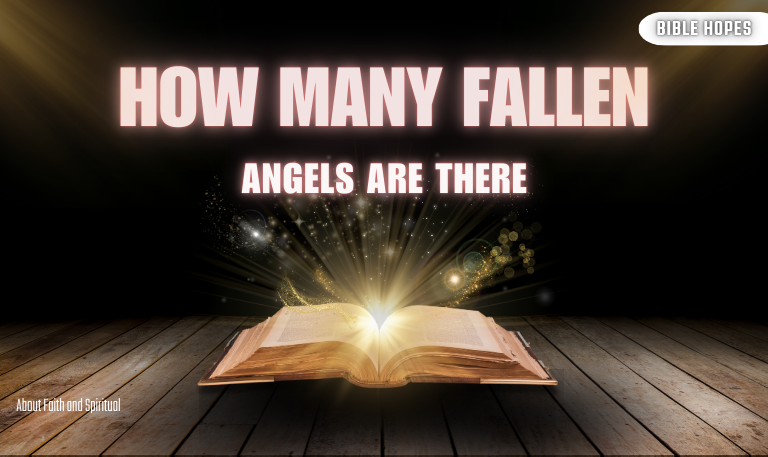The question “How old is the Bible?” is one that has fascinated scholars, historians, theologians, and curious readers for centuries. Understanding the age of the Bible is not only about tracing the timeline of its texts but also about unraveling the complex history of its compilation, transmission, and preservation. This article provides a comprehensive, expert-level overview of the Bible’s origins, dating methods, manuscript evidence, and much more — designed to answer your questions with clarity and authority.
What Is the Bible? A Brief Overview
The Bible is a collection of sacred texts central to Christianity and Judaism, comprising various genres including history, poetry, prophecy, law, and letters. It is traditionally divided into two main parts:
The Old Testament (or Hebrew Bible) — containing texts foundational to Judaism.
The New Testament — containing writings specific to Christianity, including the life and teachings of Jesus Christ.
The Bible’s importance extends beyond religion, influencing culture, art, law, and ethics globally.
Why Does the Bible’s Age Matter?
Knowing the age of the Bible helps:
Understand the historical context in which its texts were written.
Evaluate its authenticity and reliability as a historical document.
Trace the development of religious beliefs and traditions.
Appreciate its influence on culture and civilization through time.
Read Also: Baptist vs Methodist
The Structure of the Bible: Old Testament vs New Testament
| Section | Number of Books | Language(s) | Main Focus |
|---|---|---|---|
| Old Testament | 39 (Protestant) | Hebrew (mostly), some Aramaic | Creation, laws, history, prophecy |
| New Testament | 27 | Koine Greek | Life of Jesus, early church letters |
Note: Different Christian traditions (Catholic, Orthodox) include additional books called the Deuterocanonical books or Apocrypha.
Origins of Biblical Texts: When Were They Written?
Old Testament Timeline Highlights
Early oral traditions: Possibly date back to 2000-1500 BCE.
First written texts: Likely appeared between 1200 and 900 BCE.
Final compilation: Around 400 BCE, though some parts may have been edited later.
New Testament Timeline Highlights
Pauline Epistles (letters by Apostle Paul): Written circa 50-60 CE, some of the earliest Christian documents.
The Gospels: Written between 70-100 CE, chronicling Jesus’s life and teachings.
Final New Testament canon: Established by the 4th century CE.
Dating the Old Testament: Key Facts and Evidence
Dating the Old Testament is complex due to:
The mix of historical accounts, poetry, and prophecy.
Use of oral traditions before texts were written.
Lack of original manuscripts; surviving copies date from much later.
Archaeological evidence (e.g., the Dead Sea Scrolls, ancient inscriptions) supports the idea that some Old Testament texts originated during the Iron Age (circa 1200–586 BCE).
Dating the New Testament: Timeline and Manuscripts
The New Testament texts were written in Koine Greek within the first century CE, primarily:
Paul’s letters (~50 CE) — earliest texts referencing Christian theology and community.
Gospels (~70-100 CE) — narratives of Jesus’s life, death, and resurrection.
The oldest surviving New Testament manuscript fragments, such as the Rylands Library Papyrus P52, date to around 125 CE, suggesting the Gospels were circulated earlier.
Manuscript Evidence: What Are the Oldest Bible Manuscripts?
Dead Sea Scrolls (Old Testament): Discovered in the 1940s, dating from 3rd century BCE to 1st century CE. These include some of the oldest known biblical texts.
Septuagint (Greek Old Testament): Translated around the 3rd century BCE.
Codex Sinaiticus and Codex Vaticanus: Complete manuscripts from the 4th century CE, containing Old and New Testaments.
These manuscripts are crucial for textual criticism and dating.
The Canonization Process: When Was the Bible Finalized?
The Old Testament canon was mostly settled by 2nd century BCE to 1st century CE, with some variation among Jewish and Christian traditions.
The New Testament canon was debated for centuries and largely finalized by the Council of Carthage in 397 CE.
Different Christian traditions vary in their accepted canon, influencing the Bible’s “age” depending on which texts are included.
Scientific Dating Methods Used on Biblical Texts
Scientists use:
Radiocarbon dating — measures decay of carbon isotopes to date manuscripts.
Paleography — analyzes handwriting styles to estimate writing periods.
Linguistic analysis — studies language and vocabulary changes over time.
Limitations include dating copies rather than original compositions and manuscript preservation issues.
Oral Traditions and Their Impact on Bible Age
Many biblical stories and laws were initially passed down orally for generations before being written. This impacts dating because:
The oral phase could extend back centuries before writing.
Oral transmission affects textual variations found in manuscripts.
Comparing the Bible to Other Ancient Texts
| Text | Approximate Age | Language(s) | Religious Tradition |
|---|---|---|---|
| The Bible (Old Testament) | 1200 BCE (oral) – 400 BCE (written) | Hebrew, Aramaic | Judaism, Christianity |
| The Quran | 7th century CE | Arabic | Islam |
| The Vedas | 1500-1200 BCE | Sanskrit | Hinduism |
| Epic of Gilgamesh | ~2100 BCE | Akkadian | Ancient Mesopotamian |
The Bible is one of the oldest religious texts still widely used today.
Read Also: Catholic vs Baptist
Controversies and Debates on Bible Dating
Some scholars argue for later dates for certain Old Testament books based on linguistic evidence.
The historicity of biblical events is sometimes questioned or debated.
Different faith traditions emphasize various dating to support doctrinal views.
How Old Is The Bible FAQs
Q: How old is the Bible according to historians?
A: Historians estimate the Bible’s oldest texts began appearing in written form around 1200 BCE, with the New Testament completed by the end of the 1st century CE.
Q: When was the Bible first written down?
A: Parts of the Old Testament were first written between 1200 and 900 BCE, while the New Testament was written in the 1st century CE.
Q: What is the oldest manuscript of the Bible?
A: The Dead Sea Scrolls (Old Testament fragments) dating from the 3rd century BCE, and Rylands Papyrus P52 (New Testament fragment) from around 125 CE are among the oldest known.
Q: How do we know the Bible is accurate over time?
A: Through textual criticism, comparing thousands of manuscripts, and archaeological evidence, scholars assess and confirm the Bible’s transmission accuracy.
Q: What parts of the Bible are the oldest?
A: The Pentateuch (first five books) and some Psalms are considered the oldest parts of the Old Testament.
Q: When was the New Testament written?
A: Between approximately 50 CE and 100 CE.
Q: How did oral traditions affect the Bible’s age?
A: Many stories and laws were transmitted orally for centuries before being written, extending the Bible’s age beyond its earliest manuscripts.
Q: Are there differences in Bible age between religious traditions?
A: Yes, Jewish, Catholic, Orthodox, and Protestant Bibles vary slightly in content and canonical acceptance, influencing perceived Bible age.
Q: How reliable is radiocarbon dating for Bible manuscripts?
A: Radiocarbon dating is a helpful tool but only dates the physical manuscript, not the original text’s composition.
Q: Why do some scholars disagree on the Bible’s age?
A: Differences arise due to interpretations of linguistic style, historical context, and religious perspectives.
Conclusion
The question “How old is the Bible?” opens a window into a remarkable journey spanning over a millennium of human history, culture, and faith. From ancient oral traditions passed down through generations to carefully written manuscripts and the formal canonization process, the Bible represents a complex tapestry of texts created between roughly 1200 BCE and 100 CE.
![How Old Is The Bible? History of the Bible’s Age [2025 Guide] 1 How-Old-Is-The-Bible-History-of-the-Bible’s-Age-[2025-Guide]](https://biblehopes.com/wp-content/uploads/2025/06/How-Old-Is-The-Bible-History-of-the-Bibles-Age-2025-Guide.png)


![15 Pink Bible Verses | Discover Meaning, Love [2025 Guide] 5 15-Pink-Bible-Verses-Discover-Meaning,-Love-[2025-Guide]](https://biblehopes.com/wp-content/uploads/2025/05/15-Pink-Bible-Verses-Discover-Meaning-Love-2025-Guide.png)